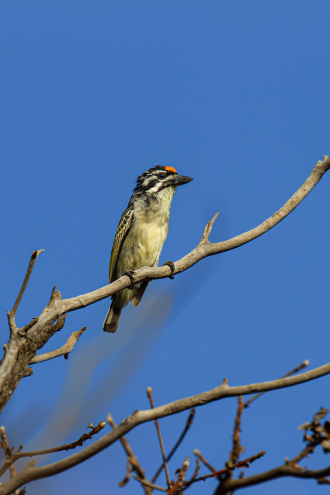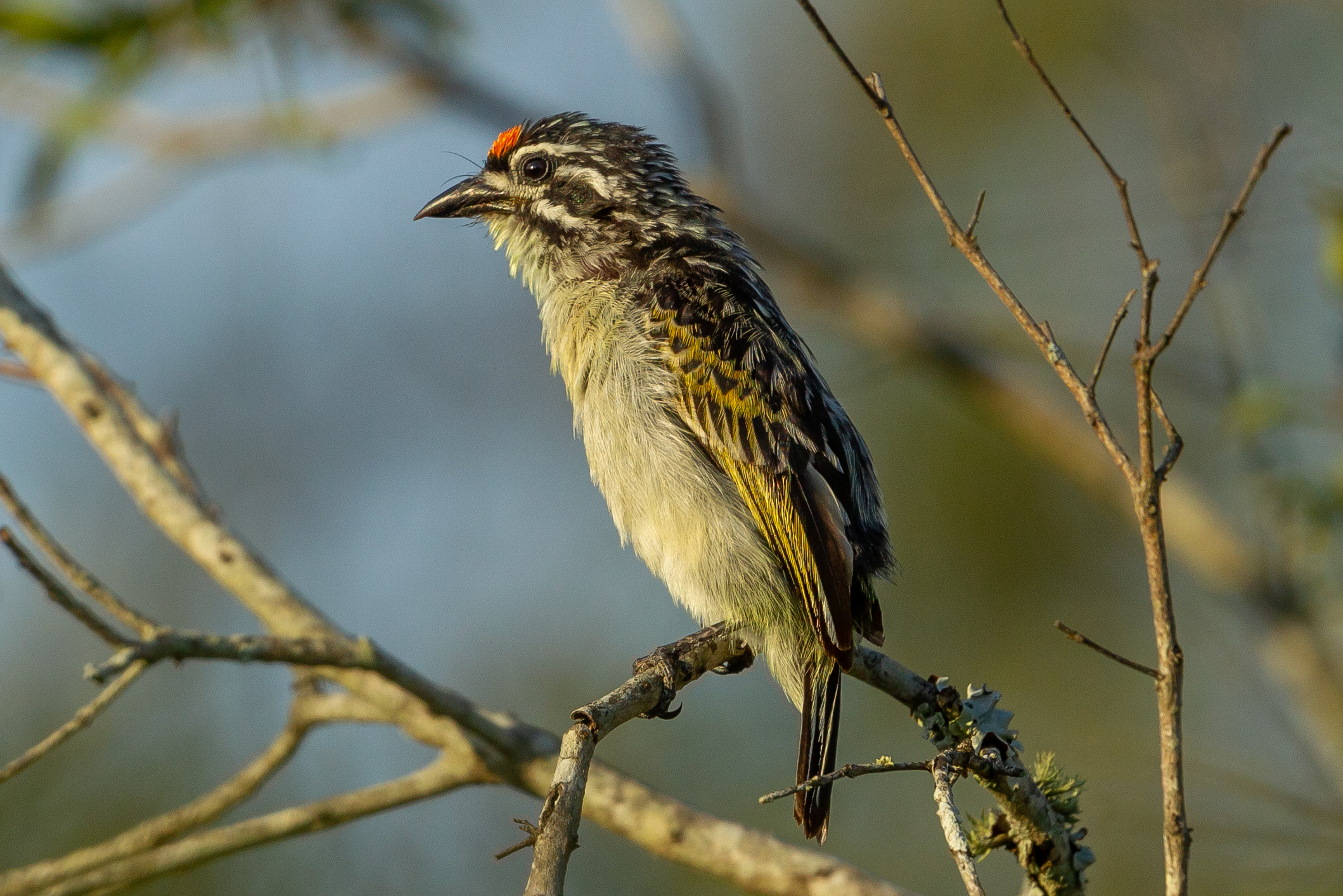Media release
From:
Investigating song rhythm in birds
Genes linked to bird song rhythm and tempo are described in a Nature Communications paper. The authors suggest that two genes — Neurexin-1 and Coenzyme Q8A — which are also known to affect human speech, may shape vocal rhythm in birds.
Whilst some aspects of bird song are learnt, rhythm is thought to be an innate trait in most species and plays an important role in sexual selection and species recognition. However, little is known about the genetic basis of song rhythm.
Matteo Sebastianelli and colleagues measured the song rhythms of yellow- and red-fronted tinkerbirds across a region of Eswatini and South Africa where the two species have hybridised. They also analysed 135 individual tinkerbird whole genomes and found two genes associated with vocal rhythm in these birds, Neurexin-1 and Coenzyme Q8A. These genes have also been widely associated with speech impairment in humans. Additionally, in the hybrid zone studied, the authors observed that red-fronted tinkerbirds sing a faster and more stable song. They suggest a possible role of rhythm in reproductive isolation, and that red-fronted females may use this to choose mates of their own species and avoid hybridising with yellow-fronted birds.
Multimedia








 International
International


